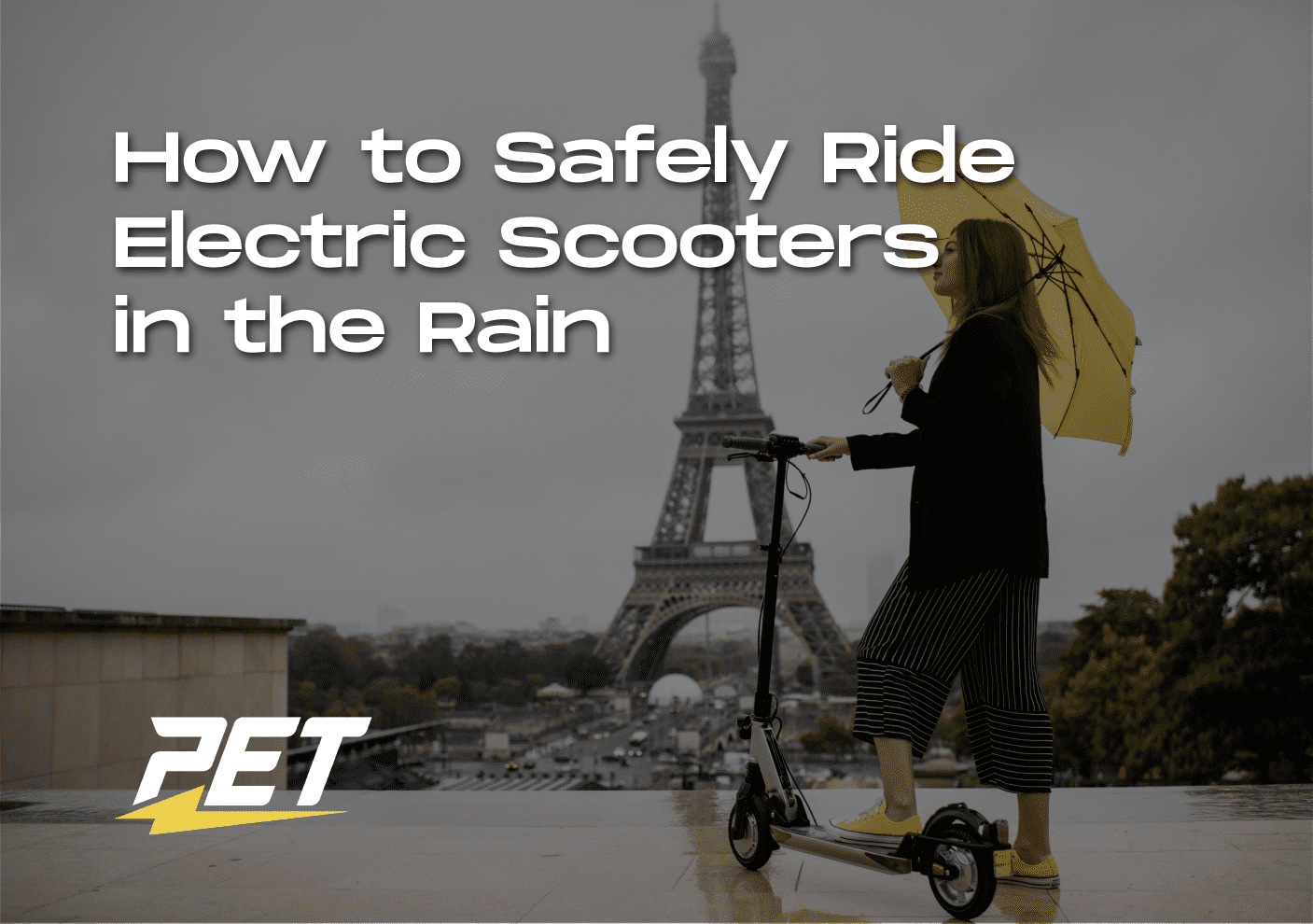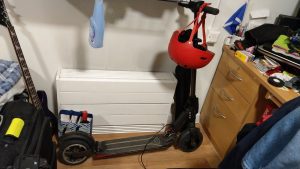
Unfortunately, electric scooters are manufactured in China, a long way away from British winter streets. Manufacturers have been slow to appreciate that we need scooters that can cope with a little bit of weather. We are starting to see a few new models with IP ratings but the majority of electric scooters void their warranties in the rain.
In the wet, all these potential risks should be ratcheted-up and much more care taken. Why? Firstly, because your visibility and the visibility of other road users drops significantly in the wet. Dodgy wipers, steamed up glasses, visors and goggles (not to mention windscreens) all play a part in wet-weather accidents. Then we move on to lack of grip, especially on two wheels but also on four wheels. Slipping and sliding on wet, greasy British roads complete with low-quality surfacing is a fact of life on these islands.
So if you do get caught in the wet, you need to obey some simple rules:
- Assume you are invisible to other road users
- Give yourself more time and space to stop or react to potential hazards
- Slow down in the turns
- Do not apply power in the turns as you may lose grip and fall
Here are some guidelines:
-
- Never leave your scooter outside where it is exposed to rain, damp and moisture
- If you get caught in the rain, dry off the scooter after use
- Always store your scooter somewhere warm and dry
Simply put, riding in the rain can be deeply unpleasant, more dangerous and risk damaging your scooter. So, if you can wait a few minutes until things dry out a little, you might want to grab that cup of tea! However, if you do get caught out, acknowledge the risks and take a little more care. Then dry off your scooter and leave it by a radiator if you can so the water can evaporate before moisture causes damage to components.

We hope this blog post has been useful for your scooter care. If you have any questions, please do contact us at hello@personalelectrictransport.co.uk or give us a call on +44 (0) 20 3318 2254 .
Ride safe,
⚡️ Team PET
Here are some related articles we think you’ll find useful:
Using & Storing Electric Scooters in Winter







